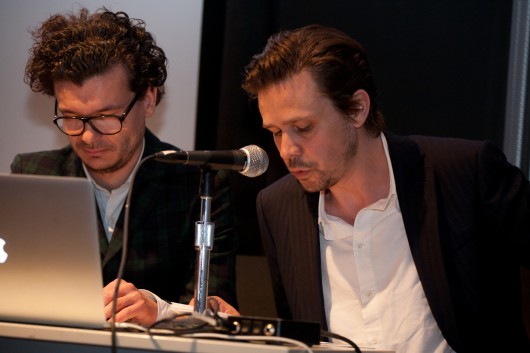A: “Being stuffed.”
Jan and Randoald studied in the same school—Jan in fine arts and Randoald in graphic design—for four years but spoke hardly one word to each other the entire time. Randoald was “a suit man” and Jan was “an overalls man”. Now they are both suit men. They teamed up and formed a studio in 2004, aptly named Jan en Randoald.

Jan en Randoald
Jan W. Hespeel (1972) and Randoald Sabbe (1973) graduated respectively in the free graphics and graphic design department at Sint-Lucas Ghent, Belgium. They were very polite to each other but never had a conversation. They started to teach at Sint-Lucas in 1997 and soon a certain synergy appeared. In 2004 they started their collaboration and named their studio "Jan en Randoald". It is now one of the most awarded graphic design studios in Belgium. Some of their clients: Antwerpse Musea, STAM/Stadsmuseum Gent, Concertzaal De Bijloke, Witte Zaal, De Werf Brugge, Theater Artemis & Véronique Branquinho. About their work: "We sit back in front of our computer screen and discuss a lot until one gives a pass and the other one scores!"






















